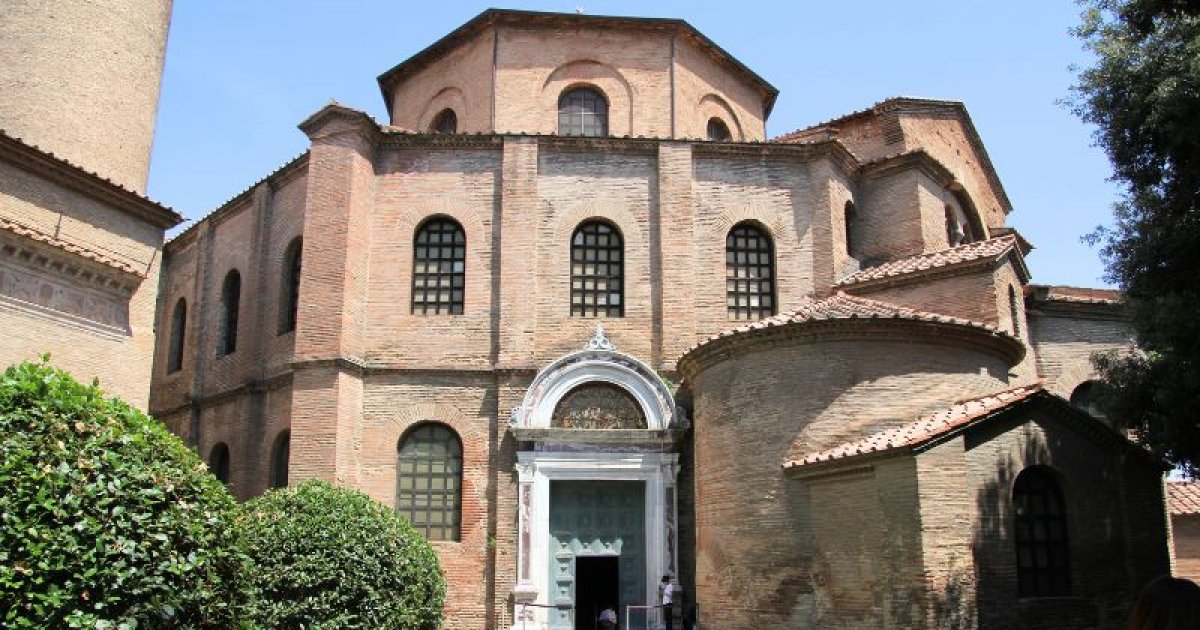BASILICA DI SAN VITALE, Exterior
 Language: English / USA
Language: English / USA
Hi, my name’s Marcy, and I’m your personal guide. Along with MyWoWo, I’d like to welcome you to one of the Wonders of the World: the Basilica of San Vitale.
The Basilica of San Vitale is by far one of the greatest masterpieces of Byzantine architecture and art still in existence.
Just imagine, its inauguration dates as far back as 548.
It was Bishop Ecclesius who wanted its construction, but it was his successor Maximian who saw the completion of the monumental work.
In those days, power was in the hands of the Byzantine emperor Justinian, who also wanted to manifest the power and grandeur of his empire through works like the one you are admiring.
The outside of the basilica already looks extraordinary, with its fusion of different elements of shapes and volumes.
Prominent among them is the octagonal-shaped central body, surmounted by a structure of the same shape, called a tiburium, which encloses a stupendous dome.
The building also has two towers with internal stairs leading to a room in the church that originally represented the matroneo, the area for worship and prayer reserved for women. One of the two towers was converted into a bell tower as early as the 10th century.
There are several entrances to the building, but the main one has an interesting feature: it is two and a half meters lower than the pavement outside the church.
Do you want to know why?
Ravenna was built in an area consisting mainly of islets. There have been several reclamation works in the past, but in some areas the problem of soil sinking and groundwater surfacing remained for centuries. These aquifers consist of rocks that are impermeable to water, which therefore, since it is not absorbed by the soil, can accumulate and rise to the surface in certain places.
The basilica therefore periodically saw its beautiful floors flooded, and as a solution, several layers of flooring were built over the centuries to overlap the previous ones. When you enter the basilica, you can see the phenomenon better.
An interesting fact: You should know that St. Vitale, after whom the basilica is named, was a Roman army officer who died a martyr's death in the 3rd century because of his faith. For the same reason his wife and, a few years later, his children were also killed, all of whom were later proclaimed saints.
The present basilica rose on an earlier church that was already dedicated to him, and he may have been martyred in this very area.



